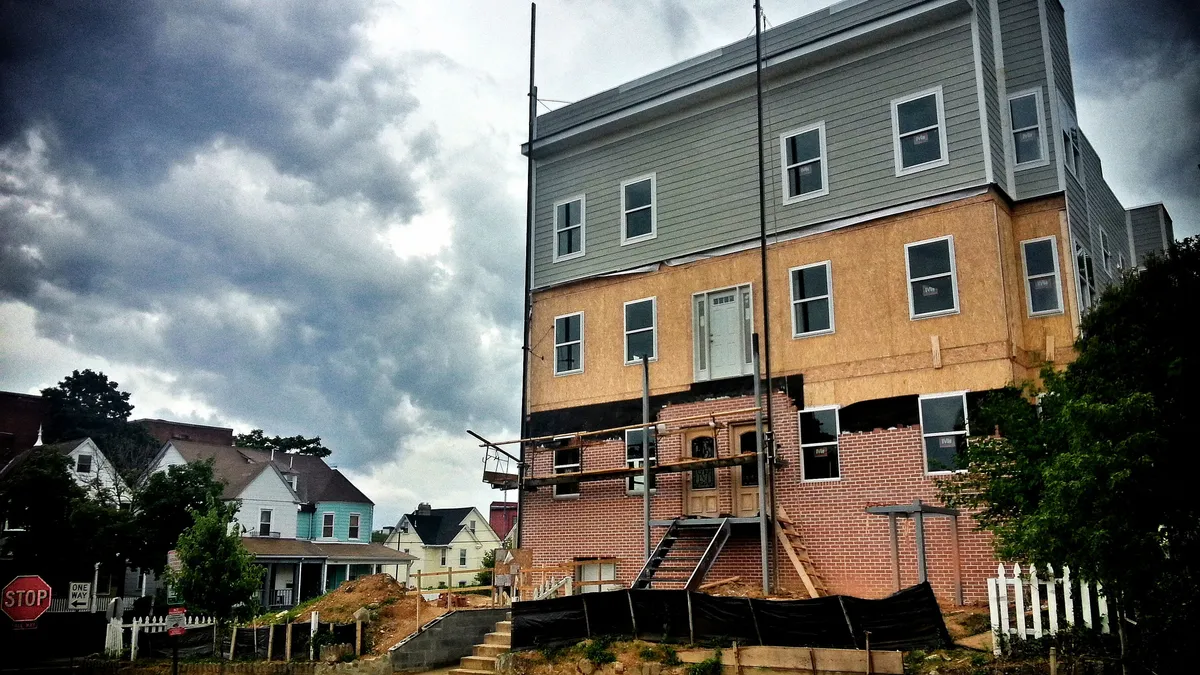Dive Brief:
- A study commissioned by the National Ready Mixed Concrete Association (NRMCA) has found that builder's risk and commercial property insurance policies are likely higher for wood-framed multifamily buildings than those made of concrete, according to Insurance Business America.
- As part of the study, researchers from Boston College solicited insurance quotes for hypothetical wood-framed and concrete buildings for the “Survey of Insurance Costs for Multifamily Buildings Constructed with Wood frames and Concrete” report. They determined that builder's risk insurance was 22-72% less expensive for concrete buildings and commercial property insurance was 14-65% less.
- NRMCA officials chalked up the difference in insurance rates to what they said was concrete's durability in the face of a fire and less degradation of concrete buildings over their useful lives.
Dive Insight:
Choosing noncombustible materials and including fire sprinklers whenever possible, said Justin Mihalik, past president of the American Institute of Architects New Jersey chapter, will increase fire resiliency. However, he also told Construction Dive last October that satisfactory fire ratings can be achieved with many materials, even combustibles like wood.
He said building codes mandate certain fire ratings for different types of construction. That rating, expressed in hours, indicates how long, for example, a wall can withstand a fire. A wall with a two-hour rating means the wall should be able to resist fire for two hours before it spreads through the wall. Wood, he said is capable of meeting fire ratings if it's tested and meets the requirements of the project.
Sandy Springs, GA, however, is not that flexible with its choice of materials for multifamily buildings constructed within the city limits. City officials revised the town building codes to require noncombustible materials be used in the construction of multifamily buildings more than three stories high or bigger than 100,000 square feet.
Despite the challenges of building-code compliance and securing a steady supply, developers are experimenting with mass timber products like cross-laminated timber (CLT). And the tallest U.S. modern wood building, which is made of spruce-pine-fir nail-laminated timber (NLT) panels, spruce glulam and concrete, opened in Minneapolis last year. The seven-story, 220,000-square-foot T3 (Timber, Technology, Transit) office building meets Minnesota building codes under the category of Type IV Heavy Timber.














